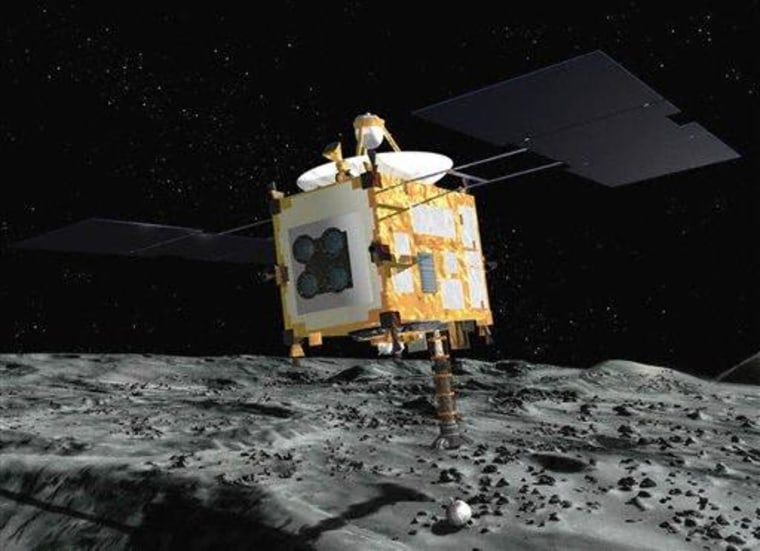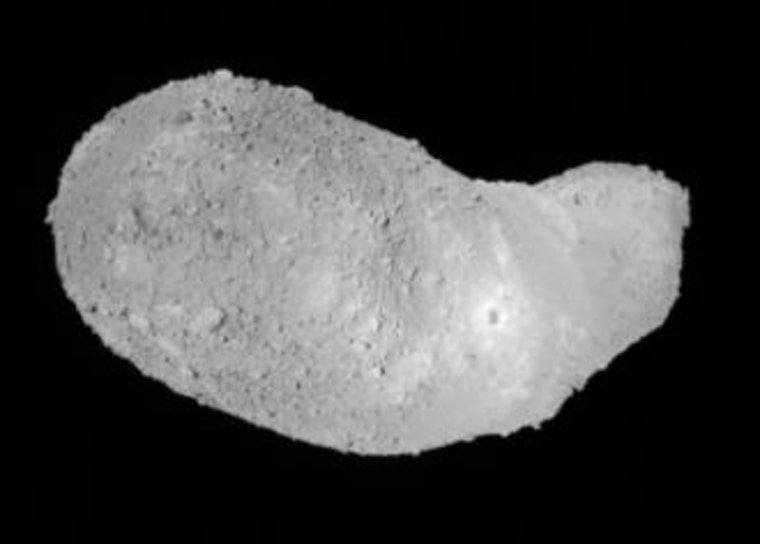A Japanese spacecraft on an unprecedented mission to bring asteroid material back to Earth is set to start home despite showing signs of trouble earlier, an executive of Japan’s space agency, JAXA, said Sunday.
On Saturday, the Hayabusa probe apparently landed on the Itokawa asteroid and collected surface samples. After the landing, the probe hovered about three miles from the asteroid and appeared to be shaking due to a possible gas leak from a thruster, JAXA said.
The probe shut down all its engines Saturday and switched to solar power while JAXA investigated the problem.
But the probe appears to be stabilizing, and JAXA plans to re-ignite its engines by Dec. 10 for the return journey, JAXA executive Yasunori Matogawa said.
“We will meet that deadline, whatever happens,” Matogawa said. Otherwise, it would be two more years before the probe — orbiting the sun between Earth and Mars together with the asteroid — would be in the right position to return, he said.
JAXA said the Hayabusa appeared to have touched down for a few seconds on the asteroid about 180 million miles from Earth, collecting powder from its surface and then lifting off again to transmit data to mission controllers.
But the agency will not know for sure if Hayabusa collected surface samples until it returns to Earth. It is expected to land in Australia’s Outback in June 2007, more than four years after its launch in May 2003.

If all goes well, it will be the first time a probe returns to Earth with samples from an asteroid, according to JAXA. A NASA probe collected data for two weeks from the asteroid Eros in 2001, but it did not return to Earth.
The landing on the asteroid was Hayabusa’s second, following a faulty touchdown earlier this month. JAXA lost contact with the probe during that attempt and did not even realize it had landed until days later — long after it had lifted off.
Scientists hope examining asteroid samples will help unlock the secrets of how celestial bodies formed. Asteroid surfaces are believed to have remained relatively unchanged over the eons, unlike larger bodies such as planets and moons.
On top of recovering samples from the asteroid, the probe also is testing a new type of ion engine that uses an electric field to accelerate positive ions to a high velocity. JAXA hopes to use the fuel-saving technology in missions farther into space, its Web site said.
The Hayabusa mission is part of Japan’s efforts to expand its space exploration program. Earlier this year, JAXA said it would send its first astronauts into space and set up a base on the moon by 2025.
